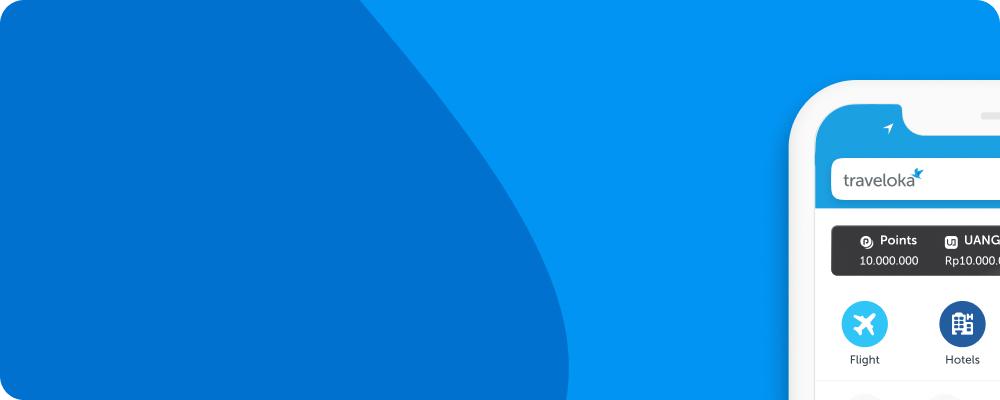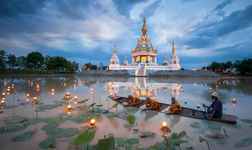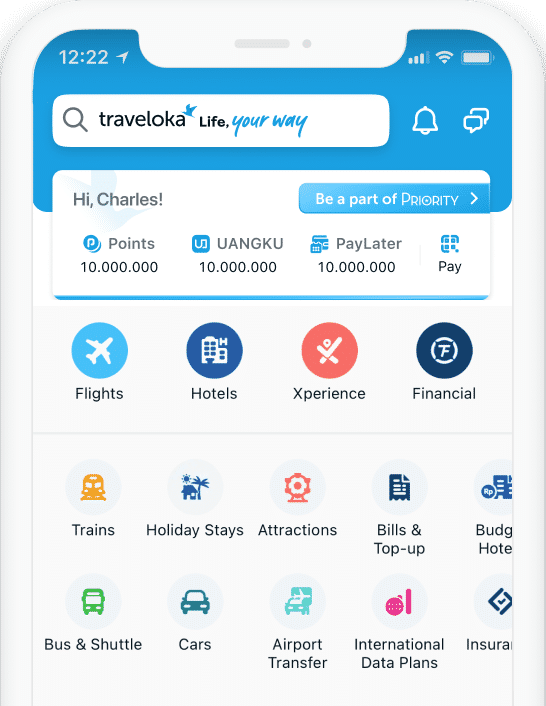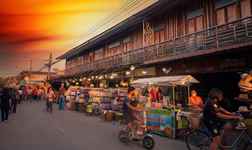
#REF!

Why Pay More
When You Can Pay Less?

Popular Hotels in Khon Kaen
Discover what you like
Destinations to Discover

Stay near exciting spots
Plenty of options, whatever your occasion
More about Khon Kaen
Introduction

Khon Kaen is a region of central Thailand that’s one of the gateways into Isaan, or northeastern Thailand. It’s a commercial, administrative and educational hub for travelers. It is part of what’s known as the “big four of Isan” along with Udon Thani, Khorat and Ubon Ratchathani. It’s about 450 kilometers northeast of Bangkok.
The district is not very populated, with an estimated population of just over 100,000. The region tends to be cooler than Bangkok, but with similar seasonal swings. The dry and cool season runs from November to January, with the hot season going from March to May, when monsoon season tends to start.
Khon Kaen is one of the major cities in Thailand’s National Economic and Social Development Plan along with Chiang Mai, Songkhla, Nakhon Ratchasima and Chonburi. It’s home to a few universities, mostly Khon Kaen University of Rajamangala University. The region has become slowly more popular with travelers since the restructuring of Khon Kaen Airport, although its development has been somewhat stagnant since the remodel in 2005.
Silk is one of the main industries for the region, as well as other aspects of agriculture. Khon Kaen has been host to a number of regional conferences such as ASEAN Regional Forums as well as United Nationsl meetings. Lao People’s Democratic Republic has an office of Consulate-General in Khon Kaen.
History
The city gets its name from Phra That Kham Kaen, a well respected chedi (stupa) at Wat Chetiyaphum in Ban Kham. Legend has it that a thâat (a four-sided, curved reliquary stupa) was constructed next to a tamarind tree stump that miraculously had life breathed into it after a contingent of monks carrying Buddhist relics to Phra That Phanom spent the night there. That Phanom was full at the time and had no more space for any additional relics, so the monks returned to this original location and enshrined the relics in That Kham Kaen.
Over time, towns and small cities would develop, but then get abandoned with new needs arose elsewhere. Eventually, a Suwannaphum ruler declared the city a permanent city, which he named Kham Kaen after the chedi. Over the years, the name became Khon Kaen, meaning “heartwood log”.
Surrounding Environment
Udon Thani
A border town to Laos, Udon Thani has much historical significance with Laos and Myanmar. Due to this, there is much cultural diversification in this city, reflected in the food, language and decor of the area.
Kalasin
A beautiful, hilly region just south of Lam Pao Dam build in the 1960s. The dam divides the town into two sections, with a ferry in the middle to save on commute time. Kalasin is famous for dinosaur fossils of sauropods from 120 million years ago.
Phetchabun
A region that borders Khon Kaen, it’s primarily famous for its natural scenery. Bordered by the Pa Sak River, Phetchabun also boasts waterfalls, lakes, national parks, and great outdoor activities such as hiking and swimming. The best time to visit is in cool season from November to late January.
Loei
One of the most sparsely populated areas in Thailand, Loei is famous for its constant state of fog. Some of its most famous mountains are Phu Kradaeng, Phu Luang and Phu Rhea.
Hotels
AVANI Khon Kaen Convention Center
A perfect blend of modern conveniences and comforts, this hotel is perfect for business and leisure travelers. There’s a fitness center, swimming pool, lightning speed WiFi, a spa, and airport pickup can be prearranged. There are interconnecting rooms for ease of privacy and convenience, and is close to government complexes, Khon Kaen University, and the Khon Kaen National Museum.
Pullman Khon Kaen
Less than 1km from Central Plaza, this hotel is in the ultimate convenient location. Equipped with a fitness center, pool, parking, and complimentary mineral water in the room, the Pullman strives to preempt all conveniences that its guests would desire. An international luxury upscale hotel, the Pullman is primarily for business travelers. The hotel has six restaurants, four bars, multi purpose meeting rooms, and a day spa for your relaxation and comfort.
Wishing Tree Resort
A luxury resort with a few different options for accommodations depending on the number of guests in a group, this is the perfect home base to explore all that Khon Kaen has to offer. From cooking classes to tour arrangements, Wishing Tree fulfills all wishes of its travelers. There’s a spa, fitness center, swimming pool, and meeting room facilities for businesspeople. There’s even a small farm on site, so you can fully expect the food to be absolutely fresh and delicious.
Transportation
Khon Kaen is quite easy to access. Here are your options
By Plane
Khon Kaen Airport is served by several airlines local in the region. Flights are generally on time, and the airport has enough amenities to serve the average business traveler. There are a few shops selling food and drinks, and there’s a money exchanger as you exit the airport. Once you arrive, there should be plenty of taxis to take you to your hotel, which if it’s in the city center, should take no more than 20 minutes and should cost between 60-100 THB.
By Train
Khon Kaen also has a train station that connects with most other major hubs in Thailand. Trains from Bangkok run a few times a day, and trains to nearby provinces such as Khorat and Nong Khai depart more frequently. Fares cost from 80 to 400 THB depending on the type of train class. Tickets are usually available 60 days before the day of departure, so if you’re planning a long train trip, it’s advantageous to get these as soon as possible, as the air conditioned classes tend to sell out quite quickly.
By Bus
From/to Bangkok: buses depart hourly from 06:20 to 21:30 for 280 THB for second class. First class buses have over 50 departures throughout the day, starting at 06:300 until 00:30. There’s one VIP bus that leaves at 21:30 for 540 THB.
From/to Chiang Mai: there are a few different first class buses departing starting at 05:00 until 08:00, then a few more at 11:00, 13:00, 14:00, 19:00 and 19:30, costing from 400 to 650 THB. The trip takes 10 to 12 hours.
Khon Kaen also has bus services from Chiang Rai, Khorat, Mae Sot, Phuket, Rayong, Surin, Udon Thani, Vientiane and Nong Khai, among others.
By Car
Khon Kaen is about a 6 hour drive from Bangkok, 9 hours from Chiang Mai, and 18 hours from Phuket. The roads are generally decent on most of the larger highways, but it’s always a good idea to be cautious during the rainy season. When roads are not used frequently, oil and debris collect on the road which become slick and slippery upon first rain.
Getting Around
Khon Kaen has plenty of options for public transportation.
Taxis
Taxis do have meters, just make sure that your driver turns it on, or that you agree on a fare before getting in.
Songtaews
Modified truck beds, these serve as public taxis in Khon Kaen, as well as much of Thailand. Just flag one down, ask the fare for where you’re going, and hop on. Ring the bell to let the driver when you want to get out. You’ll pay when you exit the vehicle.
Tuk Tuks
Tuk Tuks are also an option in Khon Kaen. Most trips will cost between 40 and 80 baht depending on where you’re going. Make sure that you arrange the price before getting in a tuk tuk.
Attractions
Wat Nong Wang
The biggest temple in Khon Kaen, this impressive structure also offers a view if you’re willing to climb up 9 stories worth of stairs. It’s well worth it! Please be respectful and wear appropriate clothes for a temple, meaning covering one’s shoulders and knees. Each of the 9 floors has its own decor. The temple is also open at night, when a view of the city is a feast for the eyes.
Opening hours: 06:00 to 21:00 daily
Entrance fee: none
Khon Kaen National Museum
Established by the Fine Arts Department of Khon Kaen University, the museum is well worth a visit. Opened in 1972, some of the displays you can look forward to are Geography and Geology of the pre-historic period, settlements, ancient cities and communities, Dvaravati culture, ceramics of Thai-Lao culture, and the evolution of art in Thailand.
Opening hours: Wednesday - Sun, 9:00 to 16:00.
Entrance fee: 100 THB
Activities
Night Market
One of the larger markets in the main town, the night market is surely the place to be in the evenings. Packed with food stalls, open air restaurants, plenty of shopping from electronics to clothes. There’s often live music on the weekends, as well as plenty of massage shops to help your weary feet recover. Make sure you bring your appetite!
Opening hours: 16:00 to 00:00, daily
Entrance fee: none, but be sure to bring plenty of cash to spend at the market.
Dino Water Park
A new attraction in Khon Kaen, there are a variety of water slides and attractions within the park. Great for a family adventure while simultaneously escaping the heat, it’s even a good activity to do while it’s raining! There’s plenty of places to get food and relax in between exhilarating water rides.
Opening hours: 11:00 to 20:00, daily
Entrance fee: 500 THB for adults, 300 THB for kids 120-140cm, 300THB for 60+, and free for kids under 120cm.
Facts about hotel in Khon Kaen
Total Accommodation | 308 Properties |
Popular City | Nai Mueang, Khon Kaen Airport |
Popular Hotel | Pullman Khon Kaen Raja Orchid, B2 Khon Kaen Premier Hotel |
Popular Landmark | Khon Kaen University, North-Eastern University |
Price per night | From THB 193.91/night |
Frequently asked questions

Guest reviews in hotel near Khon Kaen
Why book Accommodation in Traveloka?



We’ve got more than just hotels








































 Facebook
Facebook Instagram
Instagram TikTok
TikTok Youtube
Youtube Twitter
Twitter Line
Line